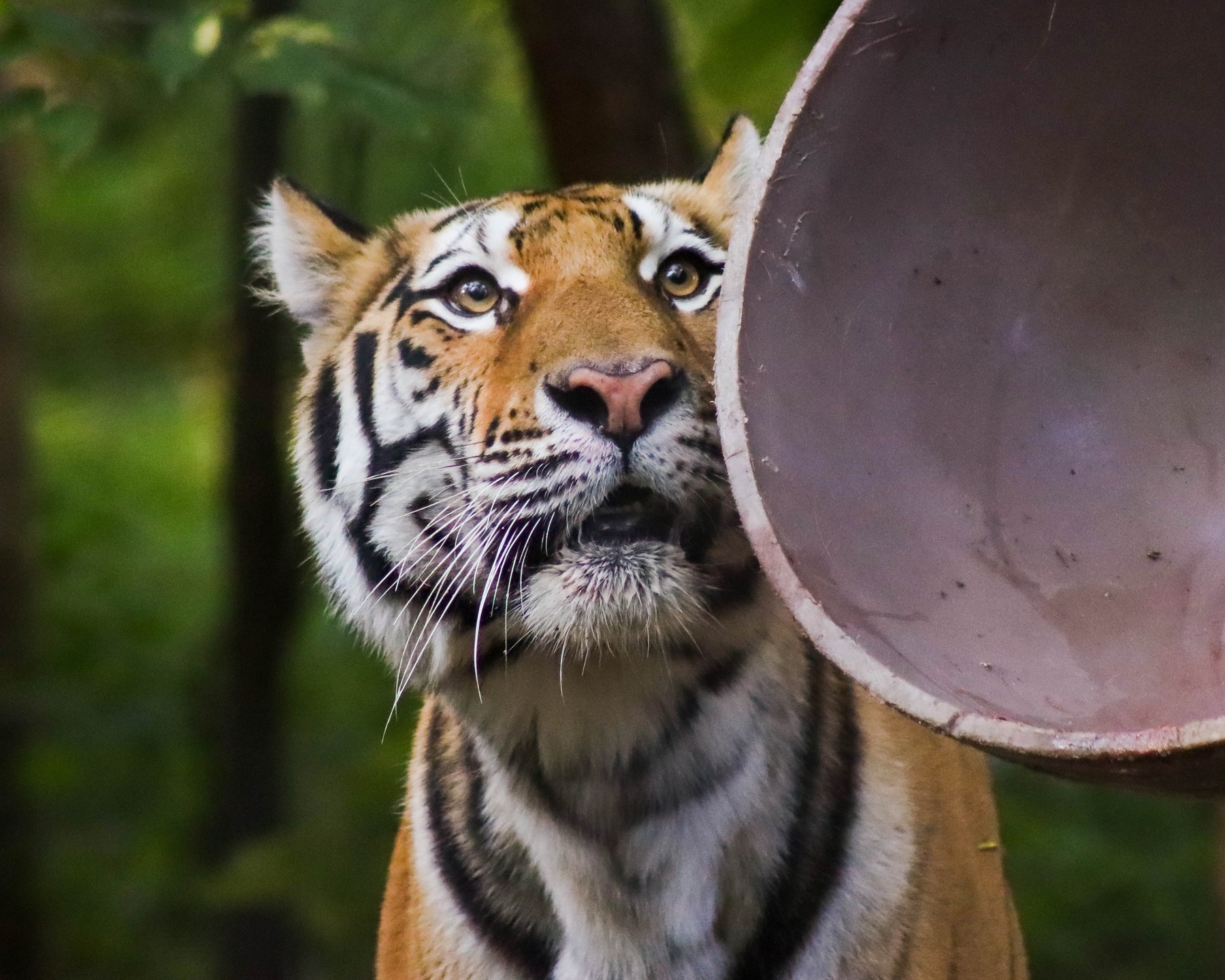– Understanding the Flehmen response in felines
– The role of zoos in wildlife conservation and education
– Enrichment activities for captive animals: purpose and practice
– The intricate connections between sports and wildlife conservation efforts
– Challenges faced by zoos and conservationists in the modern era
Zoological parks play a vital role in educating the public about wildlife and conservation, and they extend their influence through various forms of engagement, including social media. An Instagram post featuring Mabelle, a resident feline of a zoo near Grand Rapids, highlights this by blending communal sports enthusiasm with wildlife education, hinting at the potential recruitment by the @tigers baseball team and showcasing behavioral enrichment. This natural behavior is known as the Flehmen response, which is deeply rooted in the biology of felines.
The Flehmen response occurs when an animal curls back its upper lip, inhales, and often holds this position for several seconds. It appears to be Mabelle’s reaction to a scent in her environment, a behavior commonly displayed by many members of the animal kingdom, particularly ungulates and felids. This response allows animals to better analyze certain scents, especially pheromones, using an organ on the roof of the mouth known as the vomeronasal, or Jacobson’s organ. Understanding this behavior is crucial for zoologists and conservationists as it provides insights into the condition and well-being of the animals they care for.
Beyond these natural behaviors, enrichment is essential to the health and well-being of captive animals. Enrichment activities stimulate natural behaviors and provide mental and physical stimulation. They can include techniques such as novel food presentations, sensory stimuli, puzzle feeders, and environmental changes. In Mabelle’s case, the enrichment involves a snack that prompts her to perform natural hunting behaviors and run the bases, creating a fun and stimulating experience for her.
This type of engagement helps draw parallels between the charismatic appeal of sports teams like the @tigers and the less-understood but equally fascinating world of animal behavior. Such connections can encourage sports fans to take an interest in wildlife conservation, broadening the reach and impact of conservation messages. Furthermore, these light-hearted social media posts serve as informal educational tools, highlighting facts about animal behavior and the importance of enrichment in zoos.
The intersection of sports and conservation sometimes extends beyond casual reference, with many organizations collaborating for wildlife causes. Sports teams have been known to adopt species conservation as part of their community outreach programs, demonstrating a shared commitment to protecting wildlife and natural habitats.
However, the task faced by zoos and wildlife centers today goes far beyond caring for the animals. These institutions must address the challenges posed by habitat loss, climate change, and the dangers of poaching and illegal wildlife trade. Education through engagement, like the Instagram post, can play a small but significant role in raising awareness and fostering a connection between the public and wildlife conservation issues.
Moreover, zoos must navigate the public’s changing attitudes toward animal captivity. Ensuring ethical standards and translating visits and online engagement into conservation action is ongoing. The goal is to inspire visitors and online audiences, providing them with the knowledge and motivation to contribute meaningfully to conservation efforts.
In summary, the Instagram post of Mabelle the feline at the zoo near Grand Rapids represents just a glimpse into the multifaceted efforts of zoos to educate, conserve, and connect us with the wildlife we share our planet with. From the biology underlying the Flehmen response to the broader implications of wildlife engagement in a time when species face unprecedented threats, it is clear that every action, even a humorous social media post, has the potential to contribute to the larger narrative of conservation and shared responsibility for our natural world.
*****
Source Description
We heard that it’s the home opening for @tigers . I think we have a recruit for you in Grand Rapids. Mabelle would be a purrrr-fect addition to your 2024 team. ⚾️
This all-star is running the bases with her tasty enrichment! Mabelle will be enjoying opening day with a snack. This enrichment is a home-run that resulted in Mabelle’s stink face (flehmen response). 🧢


